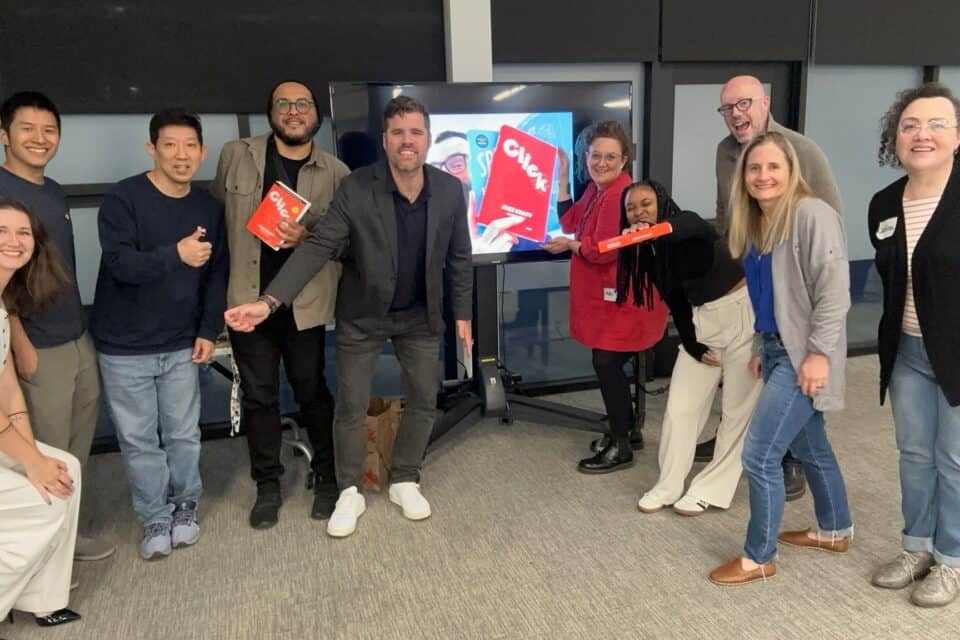How to do the work in the meeting to elevate group think
We are passionate about helping people everywhere have better meetings. So we’re sharing one of our pro-level tips to do so: do the work in the meeting, not after. By that, we mean each meeting is used to intentionally do work together at the scheduled time, not just talk about what needs to be done. This makes for much more productive syncs; you get WAY more done and meetings aren’t dull. They turn into working sessions, not slogs. There are concrete things to talk about. Everyone’s excited and engaged, which means more gets done.

Now, unanimous attendee participation is key to doing the work in the meeting. How do you capture and maintain the attention of everyone in attendance? Let’s take a look.
How to Maintain Steady Group Participation
To enable great participation, we make our meetings optional at Voltage Control. We think it’s up to the individual to choose if it’s right for them to attend a given meeting because you want each participant to bring their best self and be enthusiastic about contributing. When you give employees the choice to attend, you allow them to take ownership of how to spend their time. In essence, making meetings optional eliminates excuses. Now, there is no excuse for anyone to sit idly by in a meeting they don’t want to attend. Or, say, work on other material that they find more exciting or urgent.

If they value doing other work over being an active part of a meeting, they have the freedom to do so. The people who choose to be in the meeting, then, are much more likely to be engaged, creative, and responsive, because they decided to be there. This elevates productivity in the room and leads to more productive meetings.
In most cases, start the meeting with a no-device rule. By closing the laptops and putting away the devices, you will be amazed by what can be achieved when everyone is paying attention to the activities at hand. If you are meeting virtually, request that attendees use an app like Krisp to silence background noise and notifications that may come through on their laptops during the meeting. Focus everyone’s attention to the meeting at hand to get the most out of it.
Embrace the Child’s Mind for Optimum Performance
Being active, present, and curious creates a fruitful foundation for discovery and productivity.
Embrace the child’s mind. We all still have an inner child, we just need to access it. Luckily, there is a shortcut to do so: focus on verbs rather than nouns in our thinking and while we work. As professionals, we usually focus on nouns more than we do verbs. In other words, we tend to assign tasks and work expectations with rigid words and concepts (adult brain) that limit our creativity and productivity (child brain). It can be difficult to keep our adult-minds from taking over more than they should, but with a seemingly simple change of language, we open ourselves up to more possibilities and overall success.

Kids are masters at living in the verb. Just watch a few of them doing arts and crafts or playing on a playground. They are verbing more than they are nouning. They care less about being an official “artist,” and they don’t seem to even care about the final product of their creations. They are just “making art” or “building something.” There is an emphasis on the joy of the process, rather than obtaining a specific title or end result.
If each person in the room brings their child’s mind when we do creative work, we are all able to explore ideas freely, without obsessing on how “perfect” the results might be. We are ready to go on a journey to find the right idea instead of trying to get the idea just right.
When play is incorporated in work culture, a safe space is opened to fail fearlessly and to make room for marvel instead of judgment.

You can integrate improv exercises or deploy Liberating Structures to prevent participants from becoming too serious. This means a higher ceiling for creativity, therefore more ideas and more possibilities for solutions. Incorporating play will also help your team stay in the moment and process the work as it comes. When we get curious about, well, everything, we have more opportunities for discovery.
Lead with the concept that the sky’s the limit and anything goes in the brainstorming stage of innovation. That’s where the magic happens. Participants who feel safe to think big won’t waste brainpower feeling timid or overthinking their ideas. They will then practice better active listening skills and more fully process the work being done in the room.
You will get the best results when you work to keep everyone engaged at your meetings. Capture and maintain attendee’s attention to experience truly magical meetings.

Want to learn more about how to have Magical Meetings?
Check out Douglas Ferguson and John Fitch’s upcoming book: The Non-Obvious Guide to Magical Meetings (No Matter Who is in the Room).




